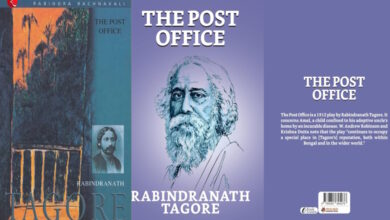Private Life of an Indian Prince by Mulk Raj Anand – Book Review
Private Life of an Indian Prince by Mulk Raj Anand – Honest Book Review for Indian Readers
 Mulk Raj Anand, one of the pioneering voices in Indian English literature, is known for his socially conscious and realistic narratives. “Private Life of an Indian Prince” is one of his most powerful novels, first published in 1953. This book dives deep into the complexities of India’s transition from a princely feudal order to a democratic nation. Through the personal story of a fallen royal, Anand paints a bigger picture of the political and emotional turbulence during India’s integration post-independence.
Mulk Raj Anand, one of the pioneering voices in Indian English literature, is known for his socially conscious and realistic narratives. “Private Life of an Indian Prince” is one of his most powerful novels, first published in 1953. This book dives deep into the complexities of India’s transition from a princely feudal order to a democratic nation. Through the personal story of a fallen royal, Anand paints a bigger picture of the political and emotional turbulence during India’s integration post-independence.
In this review, we will explore the themes, characters, style, and impact of this novel. If you’re someone who enjoys historical fiction with rich human emotions and social commentary, this book should be on your reading list.
Overview of the Story Private Life of an Indian Prince
“Private Life of an Indian Prince” tells the tragic story of Prince Victor, the ruler of a small princely state. He is a man who has lost his identity, purpose, and sense of control as India moves towards becoming a republic. The story is set during the time when Sardar Vallabhbhai Patel and the Indian government were persuading and pressuring princely states to join the Indian Union after the British left.
Victor is not a typical hero. He is flawed, addicted to alcohol, insecure, and tormented by personal failures. As the government tries to take away his princely privileges, he begins to spiral. What makes this novel interesting is how Anand does not just show us the public life of a prince but uncovers his inner life – filled with pain, lust, powerlessness, and emotional breakdowns.
Themes in the Novel Private Life of an Indian Prince
1. Decline of Feudalism
At its heart, the novel is about the fall of the princely class. Mulk Raj Anand uses Victor as a symbol of a feudal system that is no longer relevant in a modern democratic India. The pain of losing power and privilege is portrayed very emotionally.
2. Politics and National Integration
The political background of post-independence India forms a strong undercurrent in the story. The novel presents the efforts of the Indian government to unify the country and eliminate the fragmented rule of the princely states. It offers insight into the behind-the-scenes resistance and compromises during this time.
3. Identity Crisis
Victor suffers from a deep identity crisis. He is caught between the old and the new – the fading glory of the past and the uncertain future. His confusion, loneliness, and internal struggle reflect what many in the old ruling classes must have felt during India’s transformation.
4. Addiction and Escapism
Victor’s dependence on alcohol shows how he tries to escape reality. His addiction is a metaphor for his inability to cope with change. The book deals with the emotional and physical deterioration caused by substance abuse.
5. Sexual Frustration and Loneliness
The novel also explores themes of sexual frustration and moral decline. Victor’s relationships are transactional, shallow, and often abusive. This adds another layer to his tragic character and shows how deeply broken he is.
Character Analysis
Prince Victor
Victor is not your typical royal – instead of being majestic and strong, he is lost, weak, and self-destructive. Yet, this vulnerability is what makes him real and relatable. Anand doesn’t judge him; instead, he presents him as a victim of time, tradition, and circumstances.
Victor’s complexities make him a unique literary character. He is proud but insecure, rich but empty, powerful but helpless. His self-awareness sometimes shines through, but it’s too late to change the course of his life.
Anjali
Anjali is one of Victor’s mistresses. She represents both the seductive charm of the past and the emotional emptiness of relationships built on power imbalance. Her interactions with Victor show the human side of exploitation and dependency.
Supporting Characters
There are several minor characters, like the political officers, courtiers, and servants, who help bring realism to the story. They reflect the different attitudes of people caught in political and personal turmoil.
Writing Style of Mulk Raj Anand
Mulk Raj Anand’s writing is rich, intense, and very direct. He does not sugarcoat the truth. His style in this novel is more mature and psychological than his earlier works like “Untouchable” or “Coolie.”
Anand uses stream-of-consciousness techniques to show Victor’s inner thoughts. The novel has long introspective passages, emotional outbursts, and poetic metaphors. Sometimes, the language may feel heavy, but it matches the emotional weight of the story.
There’s a sense of urgency and decay in Anand’s prose – you can feel the passing of time, the loss of legacy, and the slow destruction of a man.
Historical and Social Relevance Private Life of an Indian Prince
This book is more than just fiction – it is a historical document. The integration of princely states is a lesser-discussed part of India’s independence story. Anand gives voice to those who were affected by it, not just politically but personally.
The novel also critiques blind traditions, toxic masculinity, and misuse of power. It encourages readers to reflect on what kind of leadership and values should guide a newly free nation.
Why You Should Read This Book
-
If you enjoy books that combine personal stories with historical events, this is a must-read.
-
For those interested in Indian history and post-colonial studies, the novel offers deep insights.
-
Readers who like flawed but human characters will find Prince Victor unforgettable.
-
If you’re a fan of literary fiction with social commentary, Mulk Raj Anand’s storytelling will resonate with you.
This book may not be a light read, but it is powerful and moving. It stays with you long after you finish reading.
Some Criticisms of the Book Private Life of an Indian Prince
Like every novel, this one also has its limitations:
-
Pacing: Some readers may find the pace a bit slow, especially in the middle sections where Victor’s internal monologue dominates.
-
Language: The style can be a bit heavy, especially for modern readers used to simple narratives.
-
Repetition: Certain themes and emotions are repeated, which may feel tiring to some.
However, these are minor issues when compared to the depth and impact of the novel.
Conclusion
“Private Life of an Indian Prince” is a bold, heartbreaking, and deeply human story. Mulk Raj Anand doesn’t just tell the story of a fallen prince – he tells the story of a changing India. He makes us feel the pain of letting go of the past and the fear of stepping into the unknown future.
The novel is timeless because it speaks of identity, change, loss, and redemption – emotions we all go through in different forms. For Indian readers, it is an especially important read because it captures a turning point in our nation’s history through a very personal lens. Buy this book from amazon
If you want to understand India’s soul during the early years of independence, this book gives you that rare emotional access.
FAQs about “Private Life of an Indian Prince”
Q1. Who is the author of “Private Life of an Indian Prince”?
Ans: The novel is written by Mulk Raj Anand, a pioneer of Indian English literature.
Q2. What is the book about?
Ans: The novel tells the story of Prince Victor, a ruler of a small princely state, who faces emotional and political breakdown after India’s independence. It explores themes like power, loss, addiction, and identity.
Q3. Is this book based on a true story?
Ans: While the characters are fictional, the backdrop of the novel – the integration of princely states into India – is based on real historical events.
Q4. Is the book suitable for beginners?
Ans: It may be a bit challenging for beginners due to its heavy emotional tone and complex writing style. However, readers interested in serious literature and Indian history will enjoy it.
Q5. What makes this novel special?
Ans: Its combination of personal tragedy with national change, rich character development, and realistic portrayal of post-colonial India makes it a unique and powerful novel.
Q6. What age group is this book suitable for?
Ans: It is best suited for mature readers, preferably 16+, as it deals with adult themes like alcoholism, politics, and emotional trauma.
Q7. How long is the book?
Ans: The book is around 350 pages, depending on the edition, and offers a detailed, immersive reading experience.



